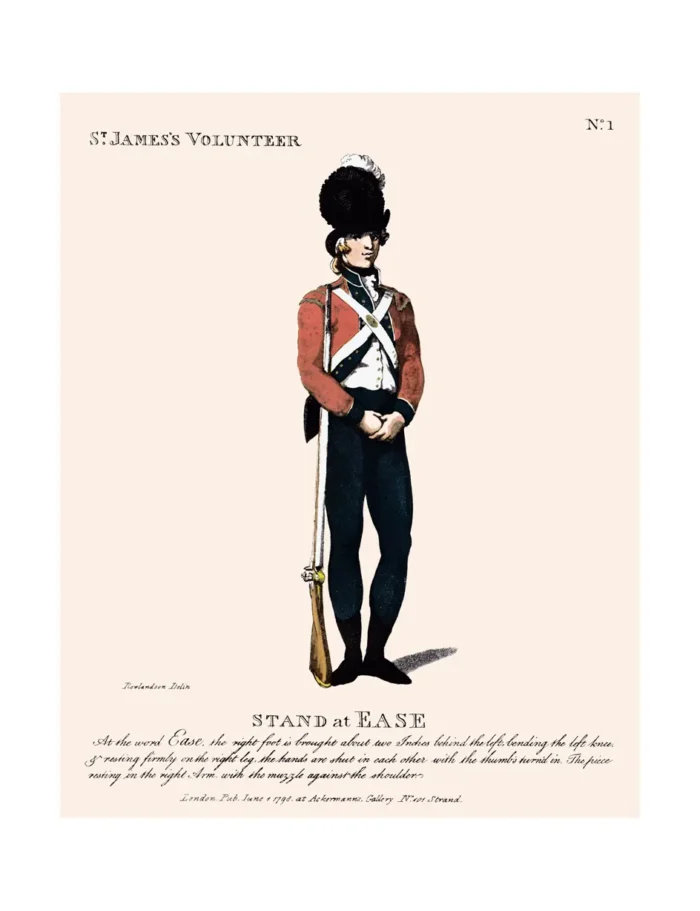No.1 St. James’s Volunteer
£12.00
St. James’s Volunteer (scroll down for a more detailed Description)
The first reprints of the 1798 aquatints by Thomas Rowlandson (published by Rudolph Ackermann) published in 1972 by Hugh Evelyn Limited.
Image size is 20.5 x 25.5 cm [8” x 10”] against a light greyish orange background (c. RGB fcf2e1) impressed on medium high white matt cartridge paper of c. 120 g/m2.
Print size: c. 26.2 x 33.7 cm [17” x 12 ¾”] may vary slightly from printers’ cut 50 years ago
Details of London Wards and Parishes provided by © the British Library
We offer thanks to the Trustees of the British Library and British Museum and Wikipedia for some text (and map outlines
Print is STANDARD size – shipping is the same for 1 to 10 prints (based on largest print size in your order) – see Shipping & Returns
Who were the Loyal Volunteers ? See here
In stock
- Satisfaction Guaranteed
- No Hassle Refunds (see Shipping and returns)
- Secure Payments
Description
Stand at Ease

The St. James’s Loyal Volunteer Regiment was centred in the Parish of St. James whose Church is located on Piccadilly in London. See map (click on it to enlarge). St James’s Church, Piccadilly, also known as St James’s Church, Westminster, and St James-in-the-Fields, is an Anglican church in the centre of London. The church was designed and built by Sir Christopher Wren. The church is built of red brick with Portland stone dressings.
St James’s is a central district in the City of Westminster, London, forming part of the West End. In the 17th century the area developed as a residential location for the British aristocracy, and around the 19th century was the focus of the development of gentlemen’s clubs. Once part of the parish of St Martin in the Fields, much of it formed the parish of St James from 1685 to 1922. Since the Second World War the area has transitioned from residential to commercial use.
St James’s is bounded to the north by Piccadilly and Mayfair, to the west by Green Park, to the south by The Mall bounding St. James’s Park, and to the east by Haymarket.
Additional information
| Weight | 0.0121 kg |
|---|---|
| Dimensions | 25 × 35 cm |




